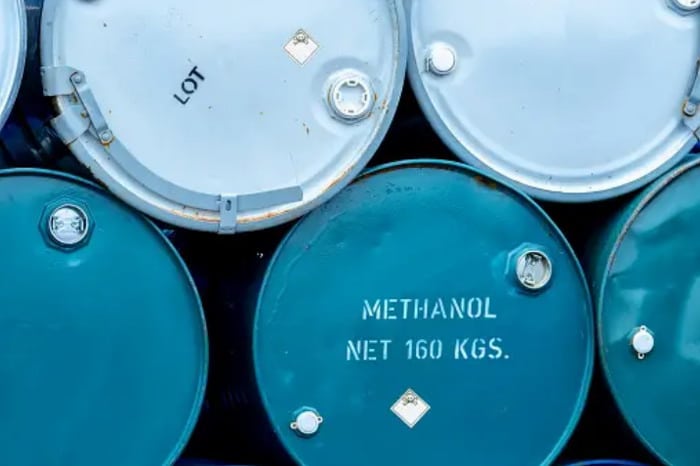Pros and Cons of Methanol

Methanol, also known as wood alcohol, carbinol, or methyl alcohol, is a simple chemical compound with the molecular formula CH3OH. It is a colorless, flammable, and volatile liquid that has a wide range of industrial, commercial, and scientific applications. While methanol offers several advantages, it also comes with a set of disadvantages and potential hazards. In this article, we will explore the pros and cons of methanol.
Pros of Methanol
1. Clean-Burning Fuel
Methanol is often used as an alternative fuel source, particularly in racing and automotive applications. It burns more cleanly than gasoline, emitting fewer pollutants, which can reduce air pollution.
2. Chemical Feedstock
Methanol serves as a valuable feedstock for the production of a wide range of chemicals, including formaldehyde, acetic acid, and various plastics and resins. It plays a crucial role in the chemical industry.
3. Renewable Methanol
Methanol can be produced from renewable sources, such as biomass and carbon dioxide. This makes it a promising candidate for sustainable and eco-friendly fuel and chemical production.
4. Energy Storage
Methanol can be used for energy storage, particularly in fuel cells. It can release energy when needed, making it valuable for applications requiring energy on demand.
5. Effective Solvent
Methanol is an excellent solvent, dissolving a wide range of substances. It is commonly used in laboratories for this purpose and in the manufacture of various products, including medicines.
Cons of Methanol
Toxicity
Methanol is highly toxic to humans and animals if ingested, inhaled, or absorbed through the skin. Even small amounts can be lethal, making it a dangerous substance to handle.
Environmental Impact
While methanol burns more cleanly than some fossil fuels, its production can have negative environmental impacts. This includes the release of greenhouse gases, as well as potential contamination of water and soil during production.
Corrosive Nature
Methanol is corrosive to certain metals and materials. This can lead to maintenance issues and potential damage to equipment and infrastructure.
Flammability
Methanol is highly flammable, posing a fire hazard. Special precautions must be taken when handling, storing, or transporting methanol to minimize the risk of fires.
Regulatory Challenges
Due to its toxicity and potential for misuse in illegal alcohol production, methanol is subject to strict regulations in many countries. This can lead to compliance challenges for industries that use it.

Methanol is also used in the lab in many analytical wet lab techniques, image source: Unsplash
Applications in Detail
1. Alternative Fuel
Methanol is a potential alternative fuel source, particularly in racing cars and some niche markets. It has a high octane rating and burns more cleanly than gasoline or diesel, which can reduce harmful emissions. However, the infrastructure for methanol refueling is limited.
2. Chemical Industry
Methanol serves as a critical building block for various chemical processes. It is used in the production of formaldehyde, acetic acid, and other chemicals, as well as plastics, resins, and coatings. The versatile nature of methanol makes it invaluable in chemical manufacturing.
3. Renewable Methanol
One of the promising aspects of methanol is its potential for renewable production. It can be synthesized from carbon dioxide captured from industrial emissions and hydrogen obtained through electrolysis powered by renewable energy sources. This “green” methanol offers a sustainable alternative to fossil-based methanol.
4. Energy Storage
Methanol can be used as an energy storage medium in fuel cells. When methanol reacts with oxygen in a fuel cell, it releases energy in the form of electricity, making it useful for applications that require energy on demand, such as backup power systems.
5. Solvent
Methanol is widely used as a solvent in laboratories and various industries. It effectively dissolves a wide range of substances, making it a preferred choice for chemical processes, extraction, and pharmaceutical production.
Safety Measures
Given the hazardous nature of methanol, stringent safety measures are necessary when handling it. These include:
1. Proper Ventilation
Methanol should only be used in well-ventilated areas to minimize the risk of inhalation.
2. Protective Gear
Anyone working with methanol must wear appropriate personal protective equipment, including gloves, goggles, and lab coats.
3. Avoiding Ingestion
Methanol is toxic when ingested, so it is crucial to prevent contact with the mouth, including not consuming food or drinks in areas where methanol is handled.
4. Fire Safety
Methanol is highly flammable. Fire prevention measures, such as the use of fire-resistant storage containers and fire extinguishers, are essential.
5. Regulatory Compliance
Compliance with local, national, and international regulations and guidelines related to methanol handling and transportation is imperative.

Methanol production at industrial scale, image source: Unsplash
Environmental Impact
1. Greenhouse Gas Emissions
One of the significant advantages of methanol is its potential to reduce greenhouse gas emissions when produced using renewable sources. By capturing and utilizing carbon dioxide from industrial processes and combining it with hydrogen derived from clean energy sources, renewable methanol can help mitigate climate change.
2. Air Quality
Methanol burns cleaner than traditional fossil fuels, emitting fewer pollutants such as sulfur and nitrogen oxides. As a result, it can help improve air quality, reducing smog and respiratory health issues, particularly in urban areas.
3. Land Use
Methanol production, particularly renewable methanol, requires less land than some other biofuels like ethanol or biodiesel. This makes it a more sustainable option, as it reduces the pressure on land use for agriculture.
4. Waste Reduction
Methanol can be produced from waste carbon dioxide, helping to address the issue of waste and contributing to a circular economy. This closed-loop system can reduce the need for landfills and waste management.
Challenges
2. Infrastructure
The infrastructure for methanol production, storage, and distribution as a transportation fuel is limited compared to gasoline or diesel. Scaling up this infrastructure requires significant investment and coordination.
3. Competing Uses
Methanol is a versatile chemical feedstock, and its use as a fuel competes with its use in the chemical industry. Balancing these applications while ensuring an adequate supply can be challenging.
4. Energy Intensive
Methanol production, especially from renewable sources, can be energy-intensive. The energy required for hydrogen production and carbon capture, along with methanol synthesis, needs to be sourced sustainably for the environmental benefits to outweigh the energy input.
Conclusion
In conclusion, methanol is a versatile chemical compound with numerous advantages, including its use as a clean-burning fuel, chemical feedstock, and potential for renewable production. However, its high toxicity, environmental impact, and safety hazards make it a substance that must be handled with care and in compliance with regulations. Understanding the pros and cons of methanol is essential for its responsible use in various applications.







